Basilica di San Marco
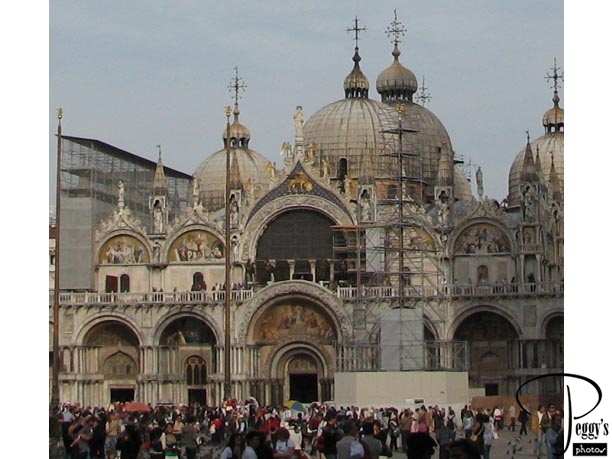
We got up early and took the first water taxi shuttle (9 a.m.) to Venice Island. We immediately got on a long line to see the Basilica di San Marco (St. Mark’s Basilica) at the Piazza San Marco. The line was already long, but by the time we were to enter the Basilica, it was three times as long. The Basilica was built in the 11th century in the Eastern Byzantine style. There was scaffolding on its exterior.

Basilica di San Marco
Basilica di San Marco
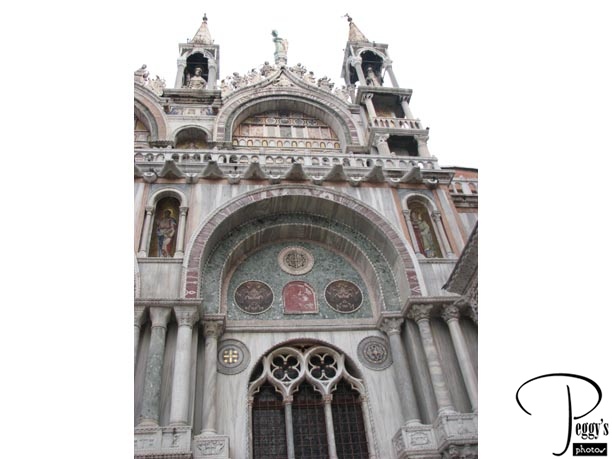
The front of the Basilica.

Basilica di San Marco
Basilica di San Marco
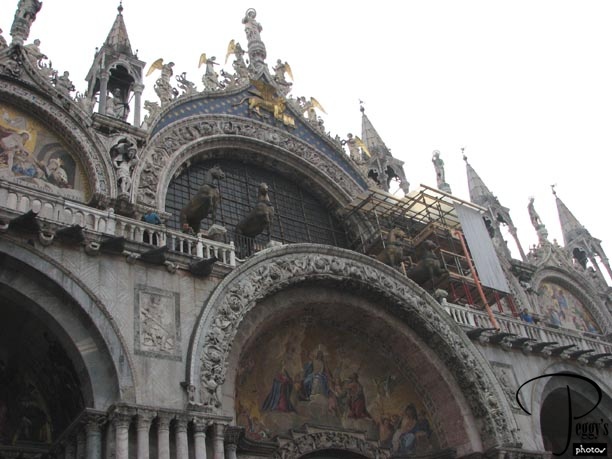
The four Horses of San Marco.

Basilica di San Marco
Basilica di San Marco
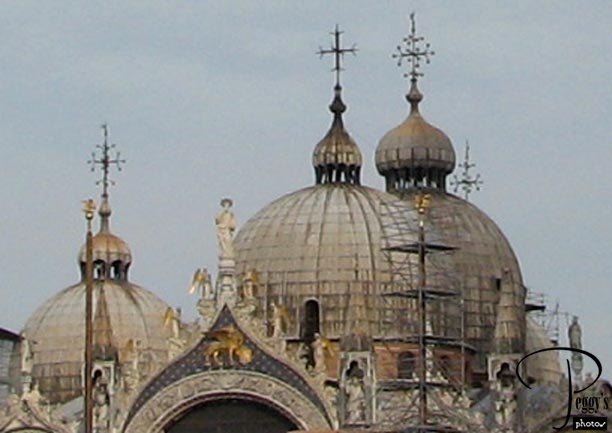
Statues of San Marco and Angels on top of the central arch, added in the 15th century.

Basilica di San Marco
Basilica di San Marco
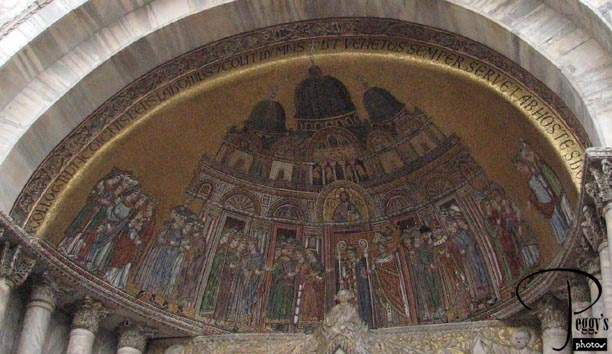
Exterior gold mosaics.

Basilica di San Marco
Basilica di San Marco
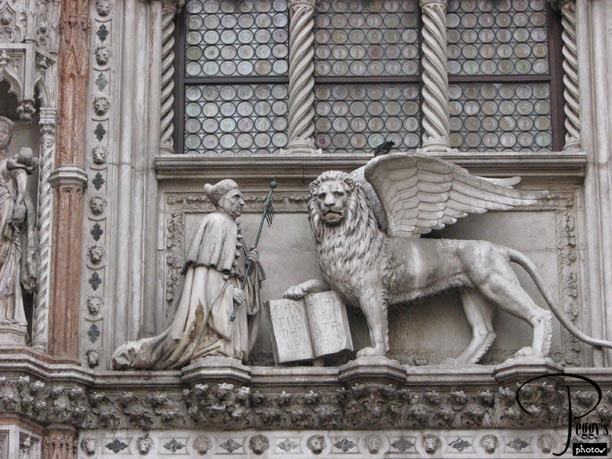
Exterior statues.

Basilica di San Marco
Basilica di San Marco
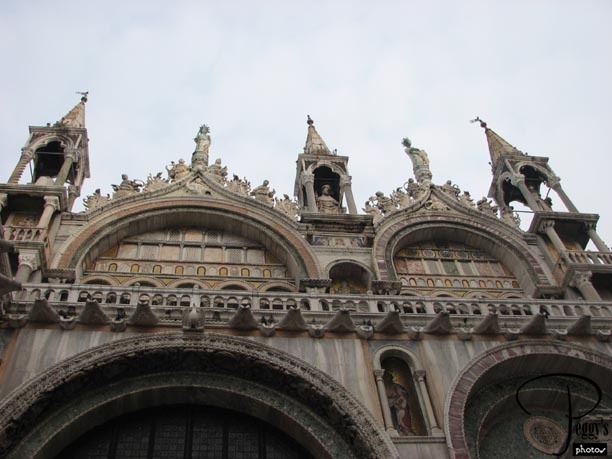
More of the exterior.

Basilica di San Marco
Basilica di San Marco
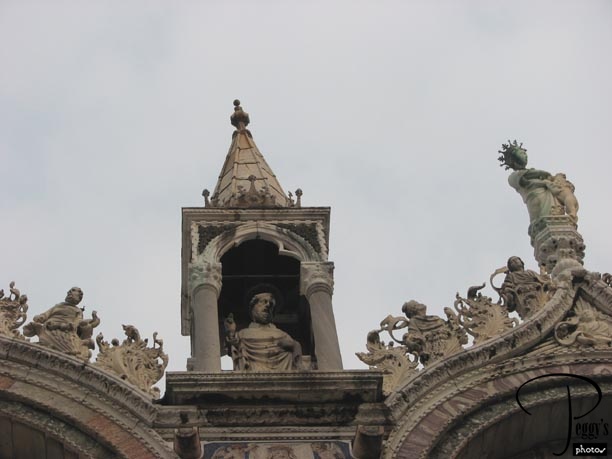
More statues.

Basilica di San Marco
Basilica di San Marco
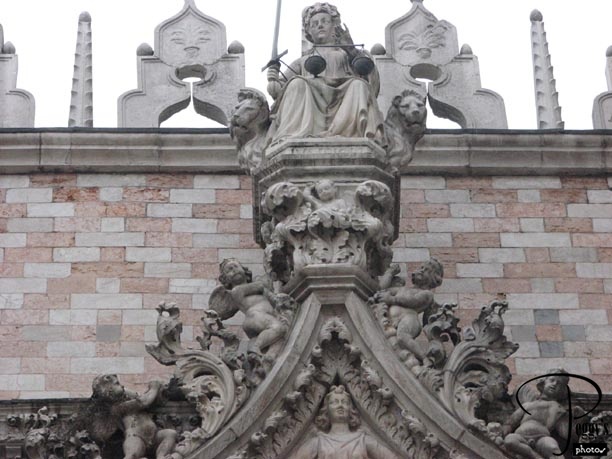
And more statues.

Basilica di San Marco
Basilica di San Marco
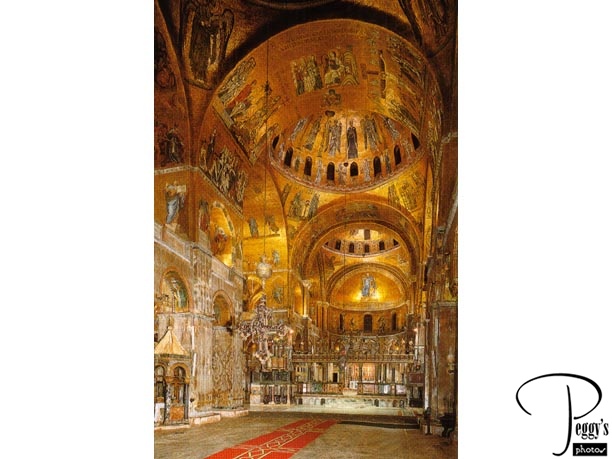
It was quite dark and very crowded inside the Basilica. The golden mosaics were somewhat hard to see. When I was here in 2005, the mosaics looked very bright––they get dirty and need to be cleaned? No photos were allowed inside the Basilica, so I have scanned some postcards of it. This is of the nave. There are 43,000 square feet of Byzantine mosaics in the Basilica.

Basilica di San Marco
Basilica di San Marco
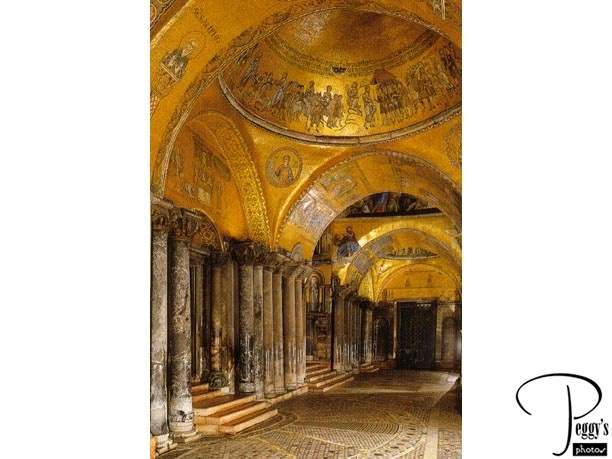
The Atrium.

Basilica di San Marco
Basilica di San Marco
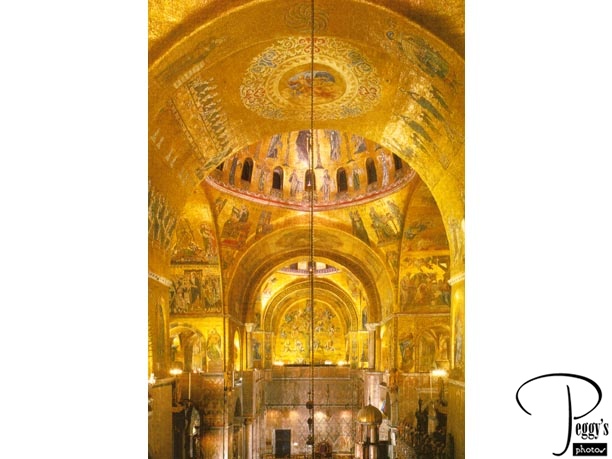
The Right Transept.

Basilica di San Marco
Basilica di San Marco
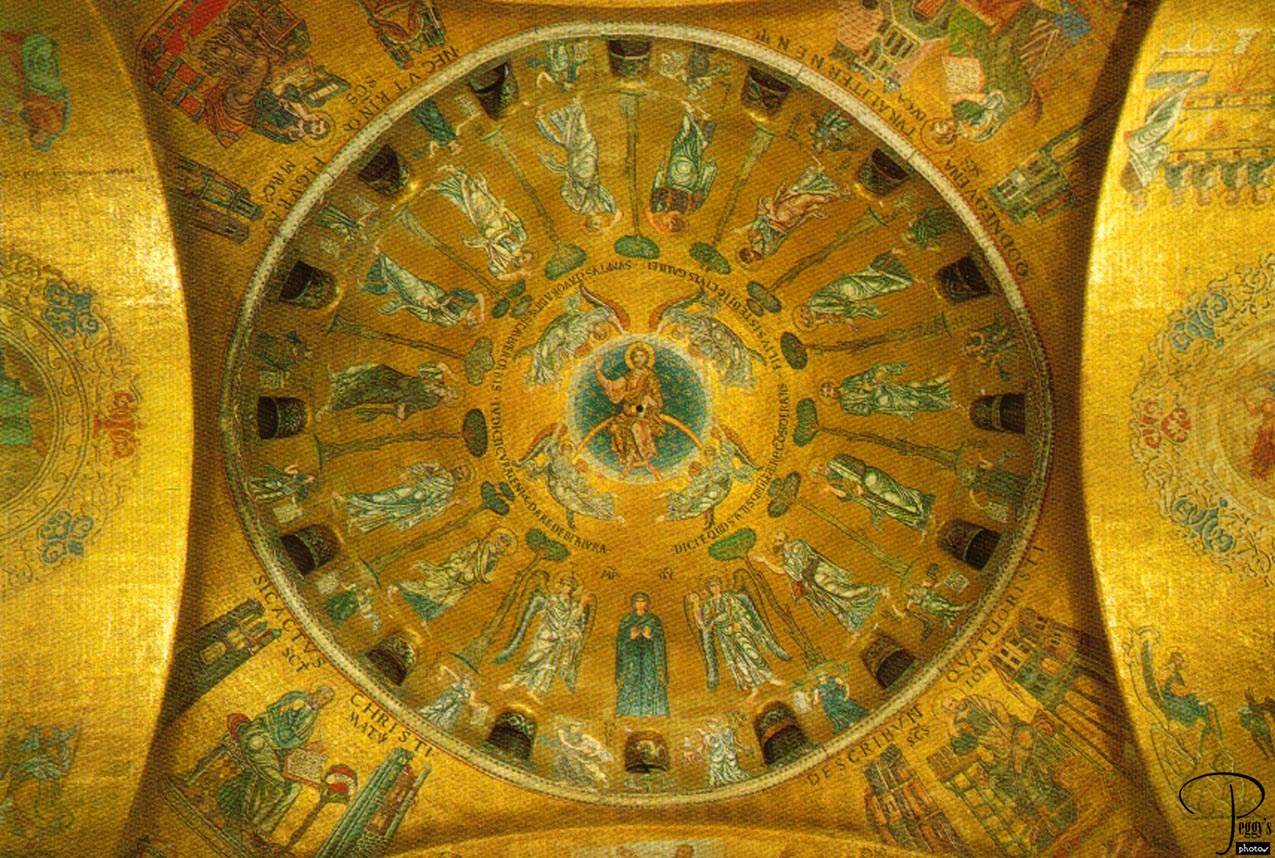
Dome of the Ascension.

Basilica di San Marco
Basilica di San Marco
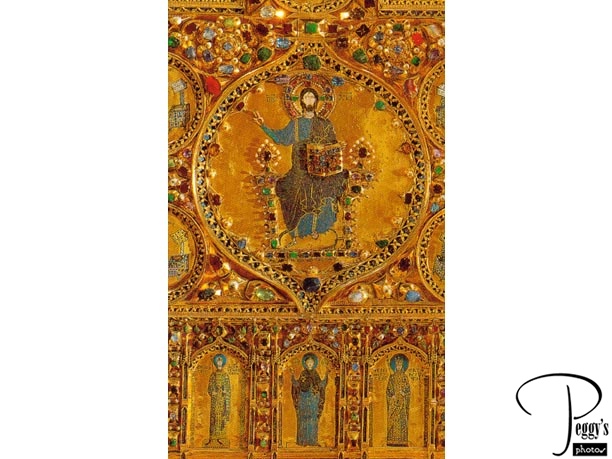
The Pala d’Oro (Golden Altarpiece). This altarpiece is behind the high altar and there is a small charge to view it. It is made up of 250 enamel panels on gold foil, Gothic–framed in gilded silver, and encrusted with 15 rubies, 300 emeralds, 1500 pearls, and other gem stones. It takes your breath away––the stones are quite large. Photo of part of the Pala d’Oro.

Basilica di San Marco
Basilica di San Marco
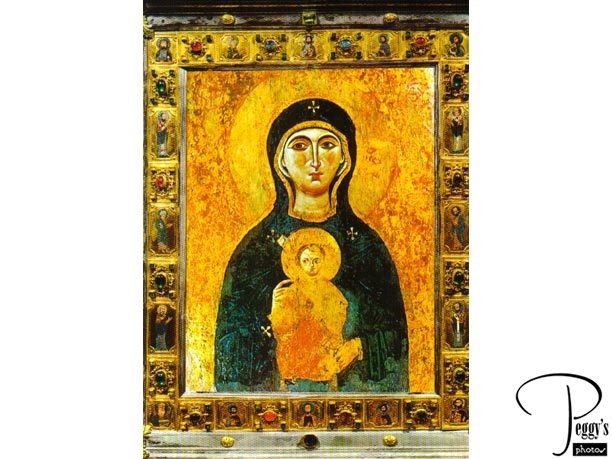
Virgin with Child, called the Madonna Nicopeia. Byzantine art.

Basilica di San Marco
Basilica di San Marco
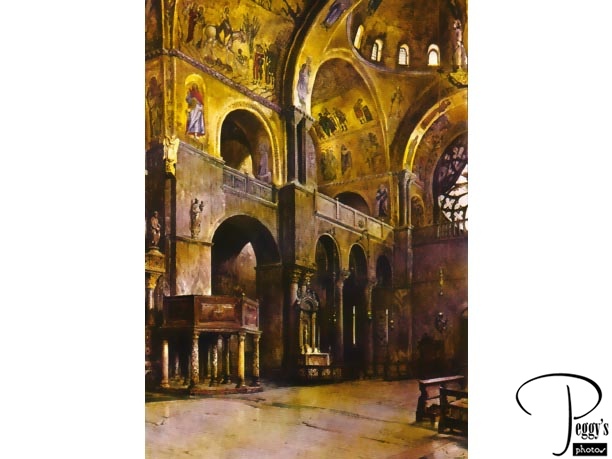
Watercolor on the left by A. Prosdocioni.

Basilica di San Marco
Basilica di San Marco
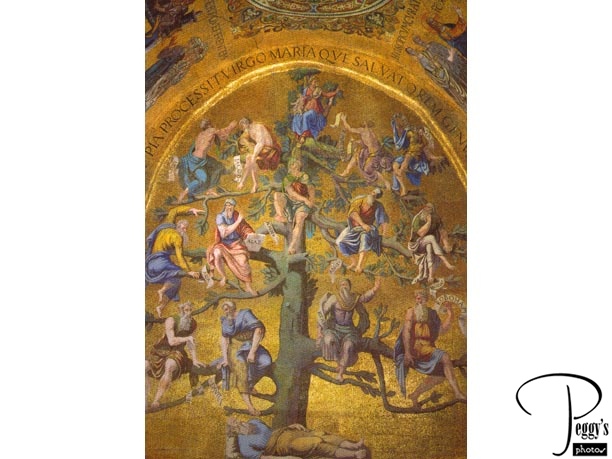
Called the “L’albero genealogico di Maria” (1542–1552). Keith went up the stairs to the San Marco Museum (small charge) for an up–close view of the mosaics and also to walk outside on the balcony. He would recommend doing this if you can handle the old staircase––I couldn’t.

Basilica di San Marco
Palazzo Ducale
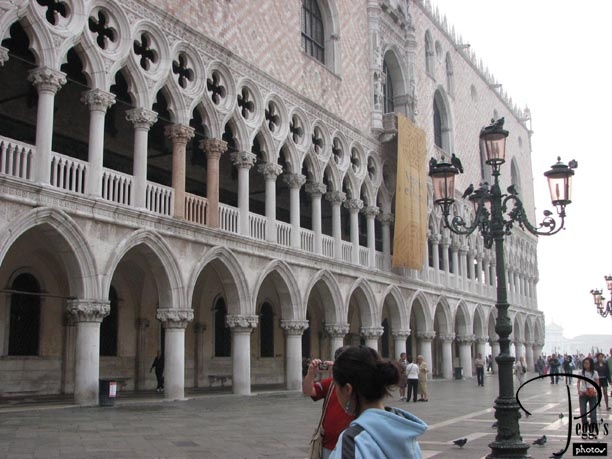
The Palazzo Ducale (Doge’s Palace) next to the Basilica. The Gothic–style palace was built in the 14th and 15th centuries of Verona marble with lace–like Istrian stone arcades. It was the seat of the Venetian government and the home of the doges (the ruling dukes) for over 400 years. It was built to be very impressive.

Palazzo Ducale
Palazzo Ducale
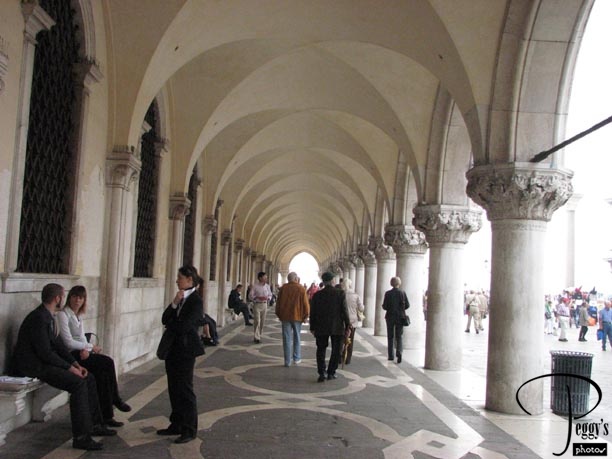
We walked through the portico to the Palazzo’s entrance. There was only a short line here but it was very slow. I had not been in the Palazzo before this trip.

Palazzo Ducale
Palazzo Ducale
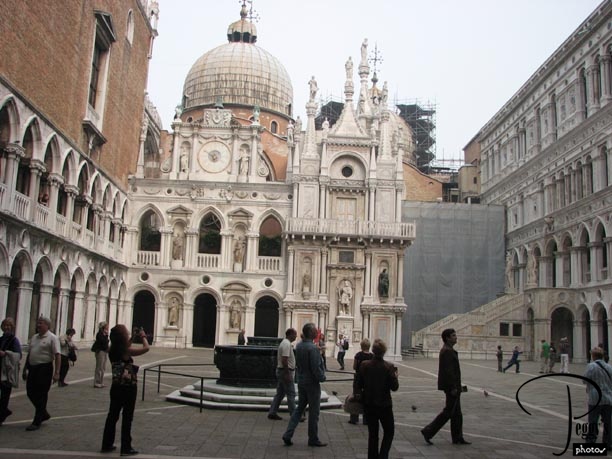
The courtyard.

Palazzo Ducale
Palazzo Ducale
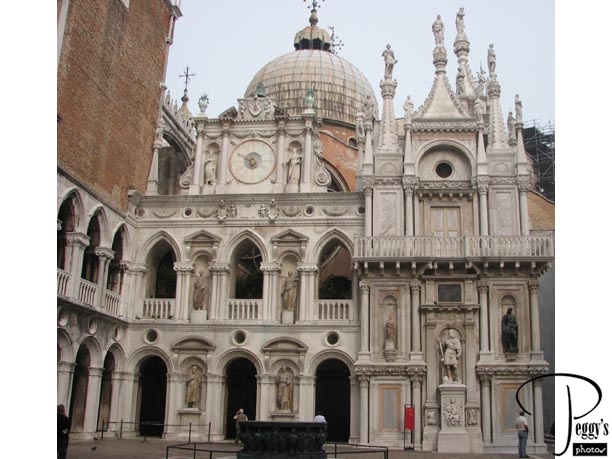
Closer–up view.

Palazzo Ducale
Palazzo Ducale
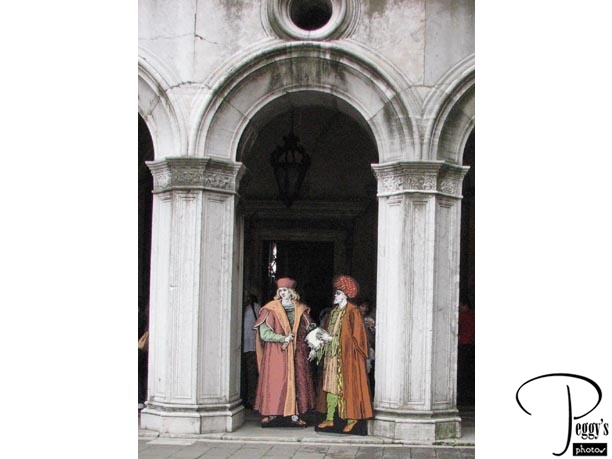
Cutouts of the Doges’ subjects.

Palazzo Ducale
Palazzo Ducale
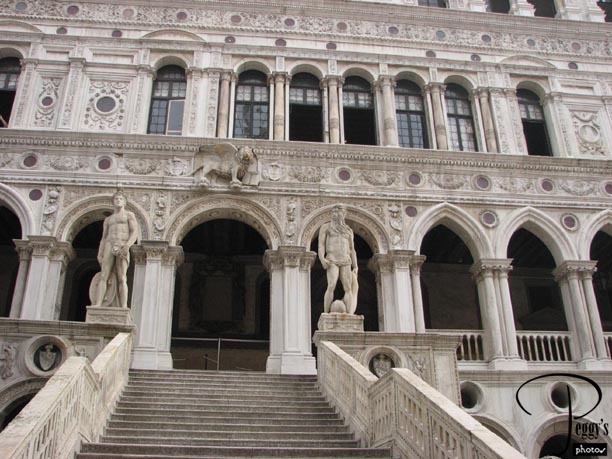
The Giants’ Staircase. It was added in the late 15th century and used for ceremonial purposes. The statues of Mars (on the left) and of Neptune (on the right).

Palazzo Ducale
Palazzo Ducale
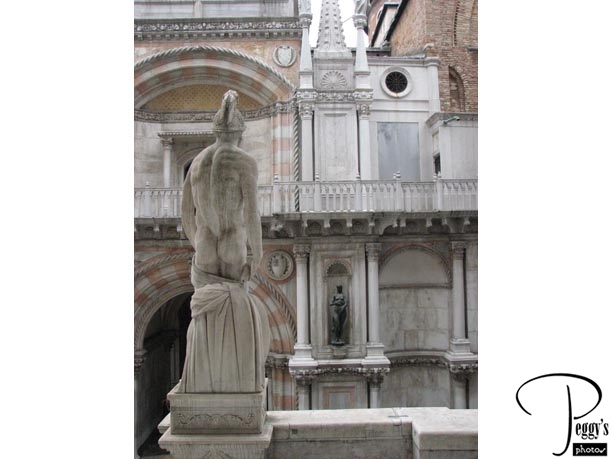
View from behind the statue of Mars.

Palazzo Ducale
Palazzo Ducale
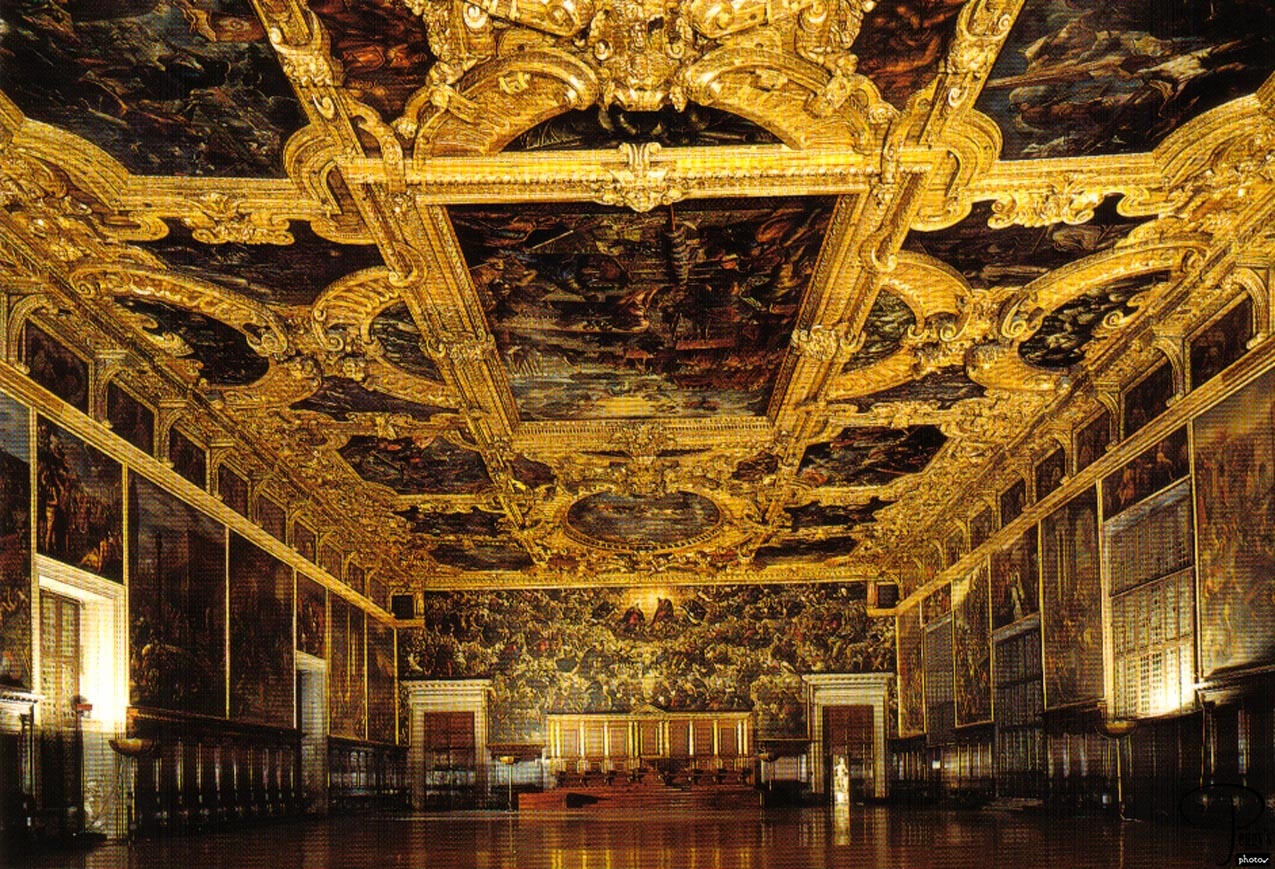
There were many stairs to climb up and down to view the interior. We viewed the public rooms, the armory (a great exhibition of old weapons, helmets, etc.), and the prison. No photos were allowed of the interior so I have scanned some postcards to use here. This is of the Sala del Maggior Consiglio––the Hall of the Great Council.

Palazzo Ducale
Palazzo Ducale
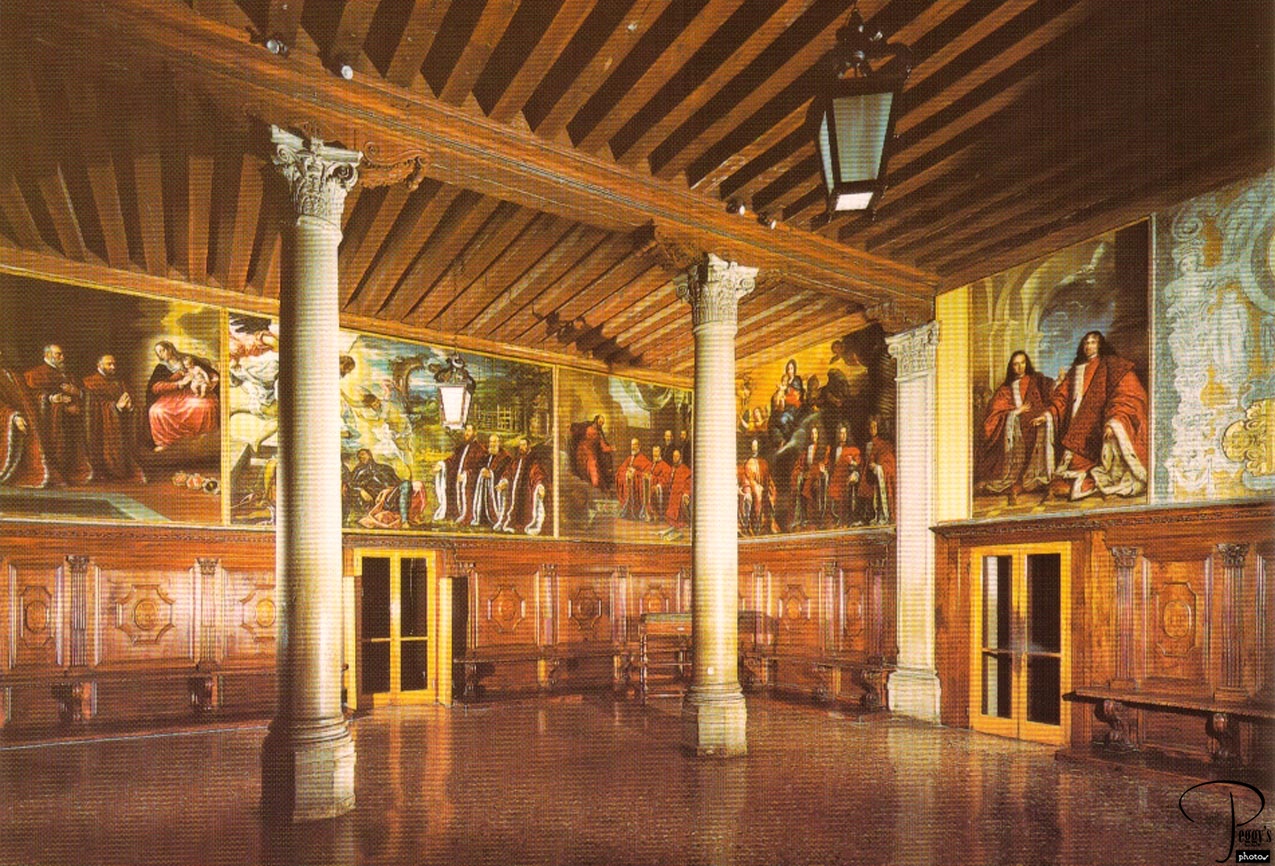
The Sala dele’Avogaria de Comun.

Palazzo Ducale
Palazzo Ducale
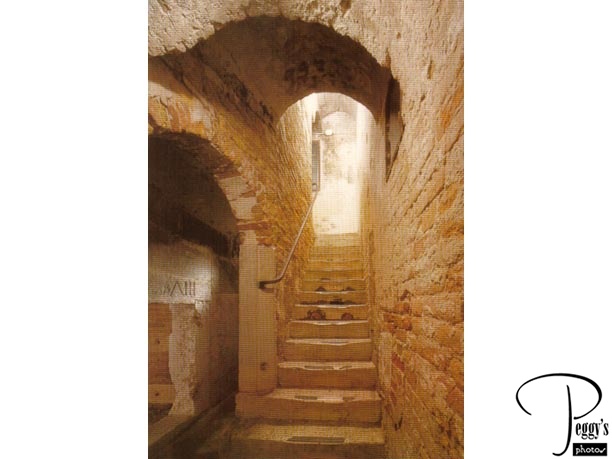
The back of the postcard reads: Una delle rampe della scala che collega die piani del complesso dei Pozzi Prigioni. I think these are the steps leading up to the Bridge of Sighs which link the palace to the New Prisons built between 1556 and 1595.

Palazzo Ducale
Palazzo Ducale
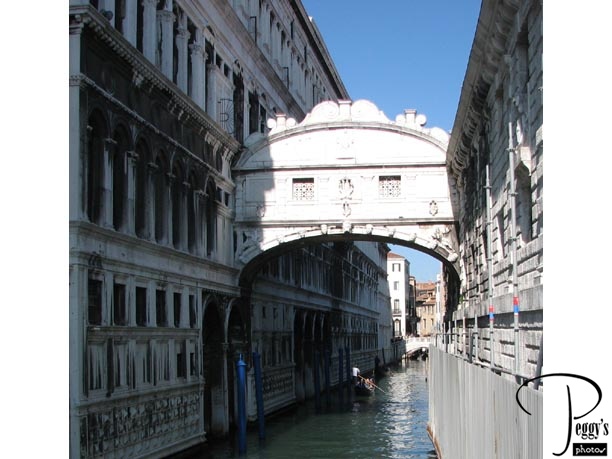
The Bridge of Sighs from the outside. The Palazzo Ducale is on the left of the canal and the prisons are on the right. The legend says that a condemned man would be led over the bridge on the way to the prison and he would “sigh” as he saw his last view of Venice.

Palazzo Ducale
Palazzo Ducale
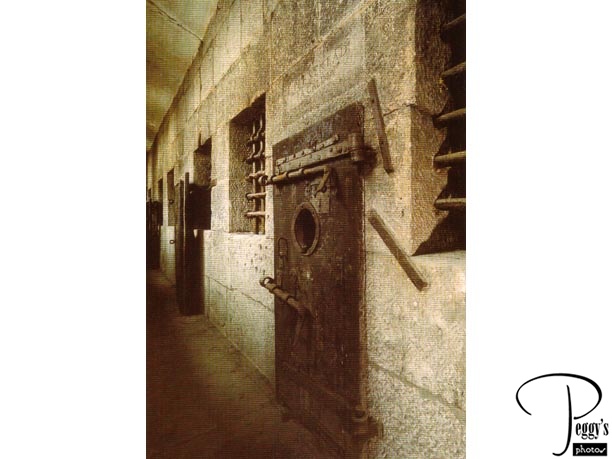
The prisons––the Corridoio e celle dei Presentati Pigioni Nuove. These prison cells were built in the 16th century and were used up to the 1930s. The petty offenders were housed here while the serious offenders were put into the first floor dungeon. The prisons were not a pleasant sight.

Palazzo Ducale
Palazzo Ducale
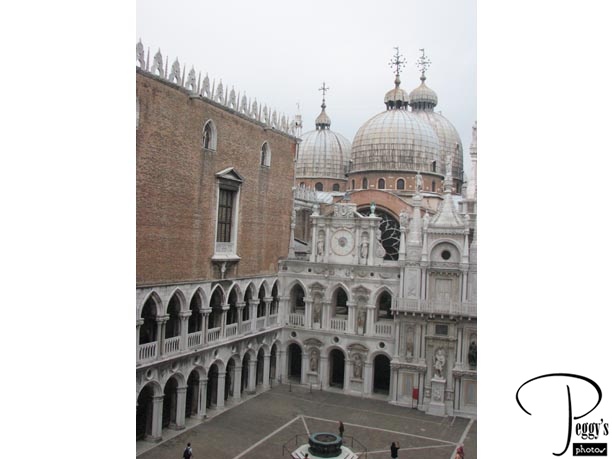
The inner courtyard seen from the second level.

Palazzo Ducale
Palazzo Ducale

Close–up of the domes.

Palazzo Ducale
Palazzo Ducale
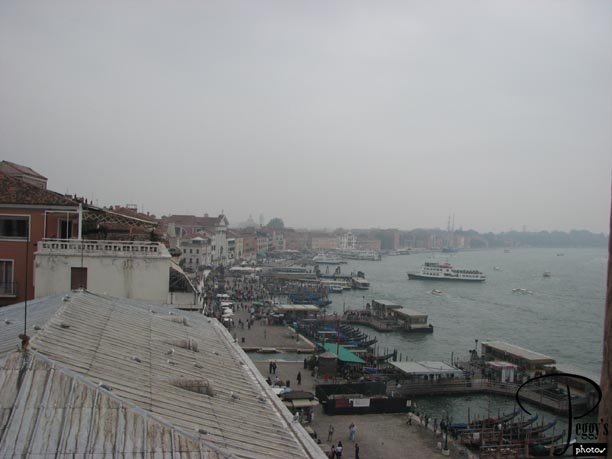
Photos were allowed through the windows of the Palazzo. Here you can see the waterfront and three vaporetto stations, each with different vaporetti lines stopping at them

Palazzo Ducale
Palazzo Ducale
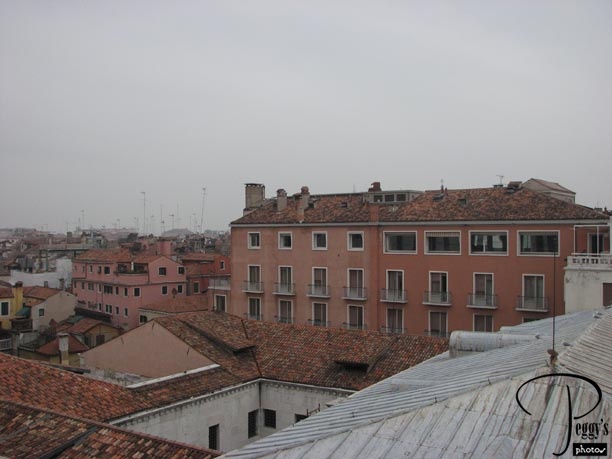
The view in the other direction.

Palazzo Ducale
Palazzo Ducale
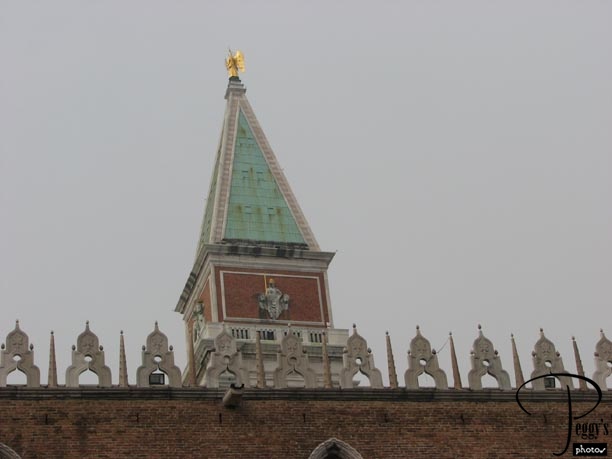
View of the tower.

Palazzo Ducale
Palazzo Ducale
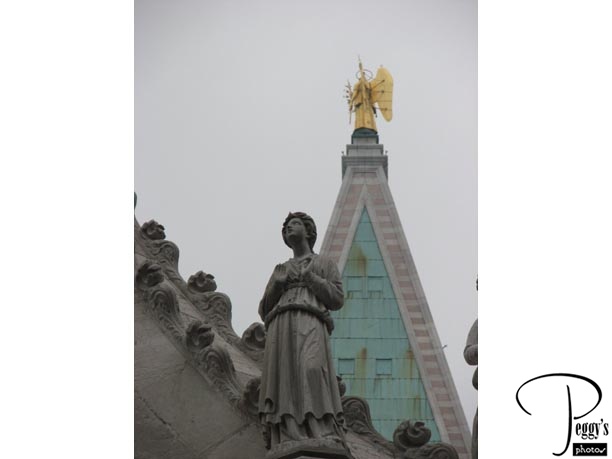
Close–up of the top of the tower and a statue.

Palazzo Ducale
The Piazzetta
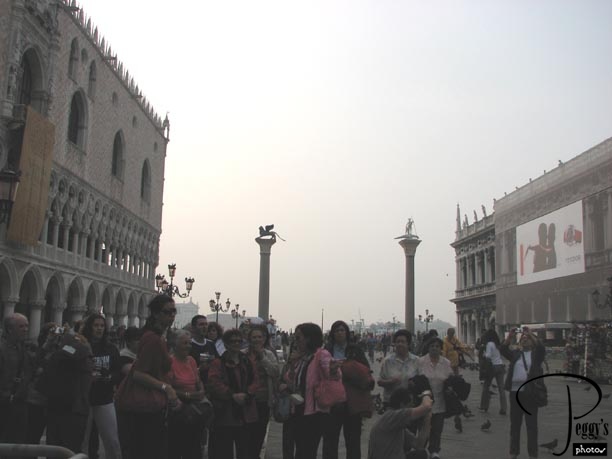
We walked through the Piazzetta to the larger Piazza San Marco. The Palazzo Ducale is on the left and the Columns of San Teodoro (on the left) and of San Marco (on the right) are in the middle of the photo.

The Piazzetta
The Piazzetta
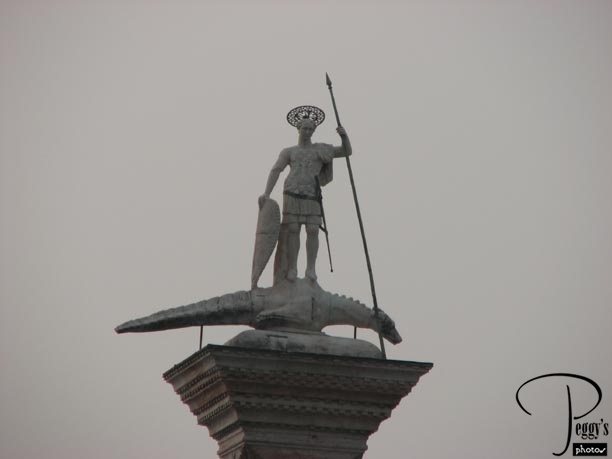
San Marco.

The Piazzetta
The Piazzetta
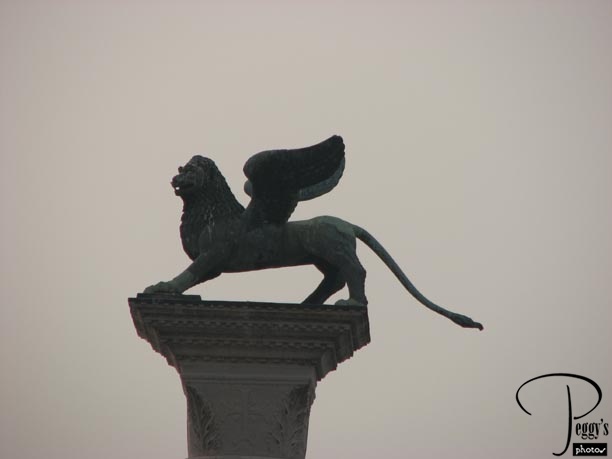
San Teodoro.

The Piazzetta
The Piazzetta
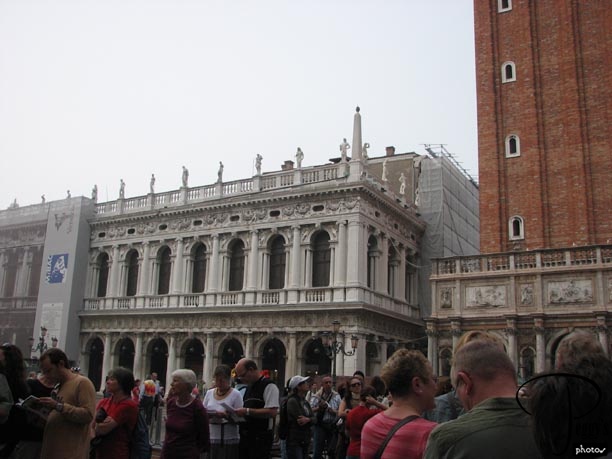
The Libreria Sansoviniana on the left and the bottom of the Campanile on the right.

The Piazzetta
The Piazzetta
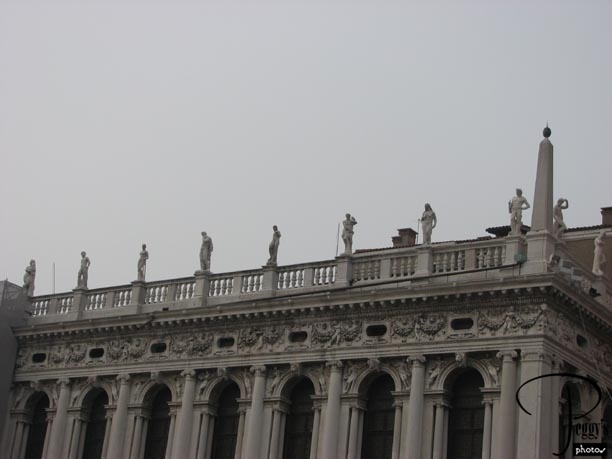
Top of the Libreria.

The Piazzetta
The Piazzetta
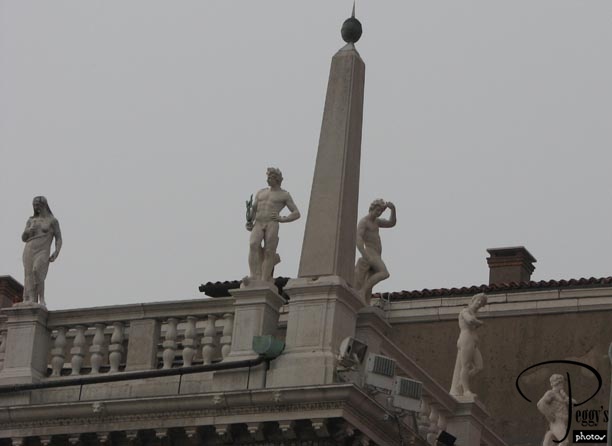
Closer–up view.

The Piazzetta
Piazza San Marco
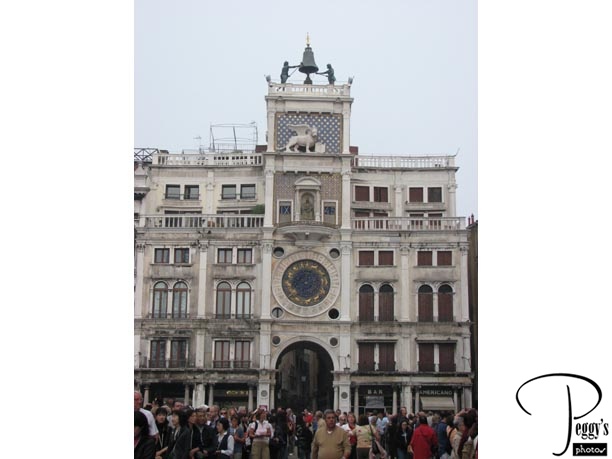
The Torre dell’Orologio (Clock Tower) which is katty korner to the Basilica, built in the late 15th century. When I was here in 2005, it was covered up as it was being worked on.

Piazza San Marco
Piazza San Marco
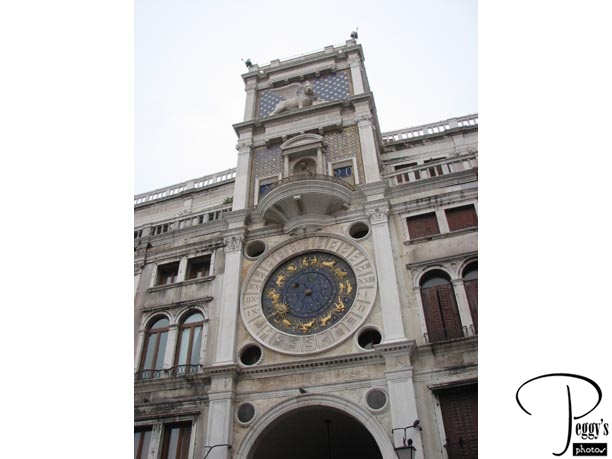
Close–up of the Clock Tower. The clock displays the phases of the moon and also of the Zodiac.

Piazza San Marco
Piazza San Marco
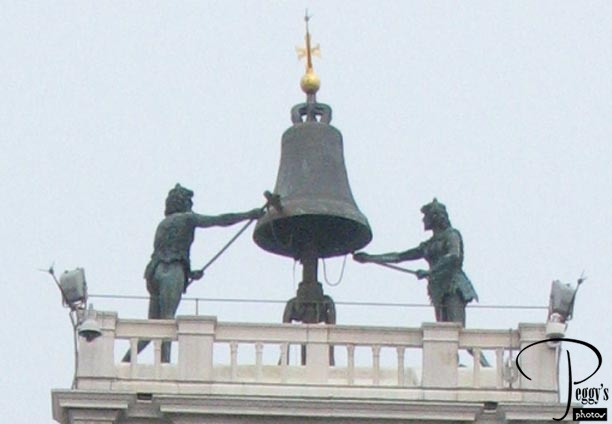
At the top of the Clock Tower are these Mori (Moors) which strike the bell on the hour.

Piazza San Marco
Piazza San Marco
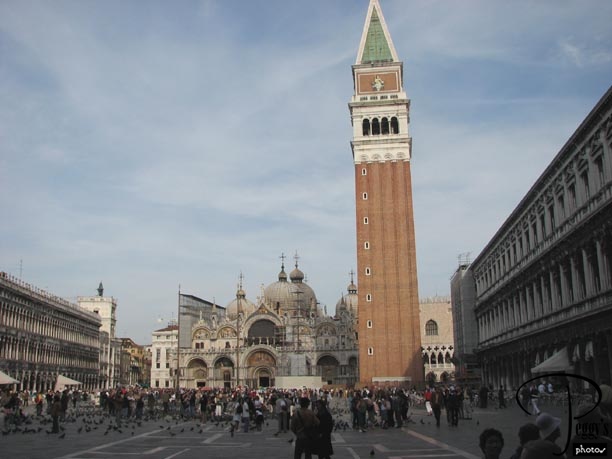
The Basilica is in the middle of the photo, the Clock Tower to the left of the Basilica, the Palazzo Ducale is to the right of the Basilica, the New Offices are the right of the photo, the Old Offices are on the left, and the Campanile drawfs everything else. Its spire is 323 feet high. There is an elevator up to the top of the Campanile. I went up in 2005, but didn’t this time and couldn’t convince Keith to go up.

Piazza San Marco
Piazza San Marco
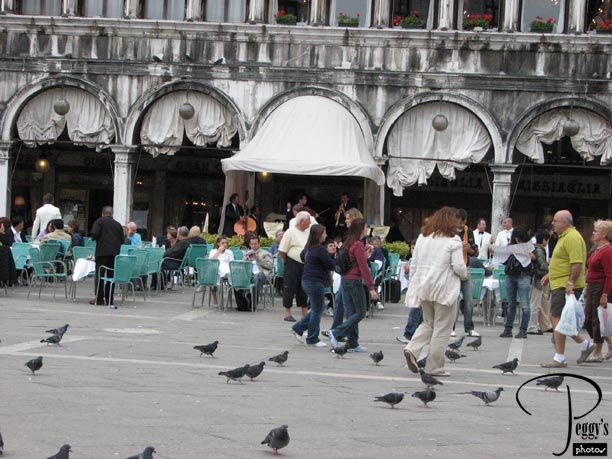
We had coffee at one of the cafes lining the Piazza. This was Saturday and most of the cafes had orchestras playing. There was a 5 euro cover charge to sit at a cafe with an orchestra. I took a movie clip of our orchestra and it is on this website: Go to Movies, Western Europe, Italy, “Piazza San Marco Orchestra–1.” Sitting at one of these cafes is a very touristy thing to do and I very much enjoy being a tourist. I had a truly delightful time drinking my coffee.

Piazza San Marco
Piazza San Marco
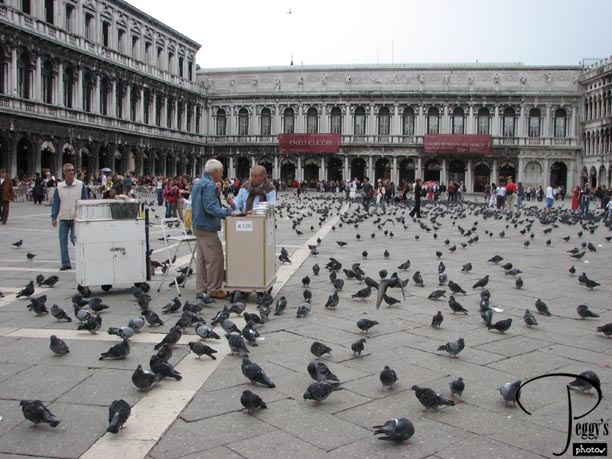
Pigeons everywhere. The vendors sell a bag of bird seed for 1 euro. The Ala Napoleonica in the back of the photo is between the Old and New Offices.

Piazza San Marco
Piazza San Marco
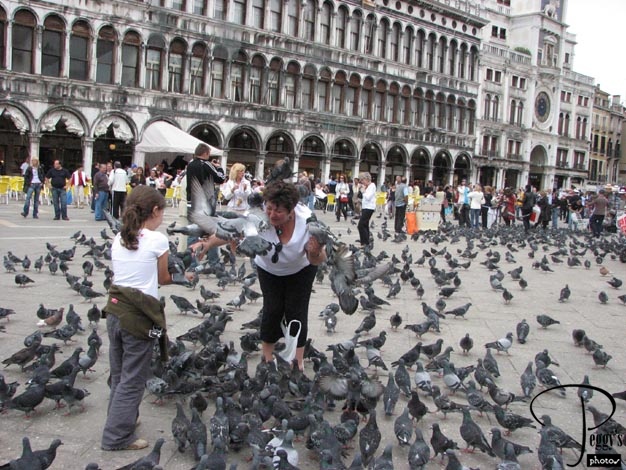
This woman is having fun feeding the pigeons.

Piazza San Marco
Piazza San Marco
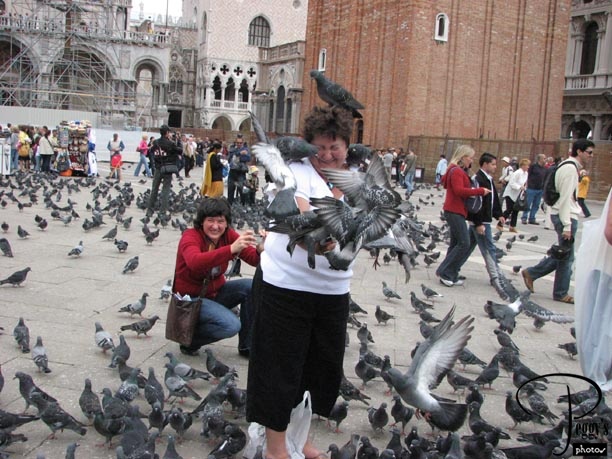
Perhaps, overwhelmed is a better description of how she is feeling.

Piazza San Marco
Piazza San Marco
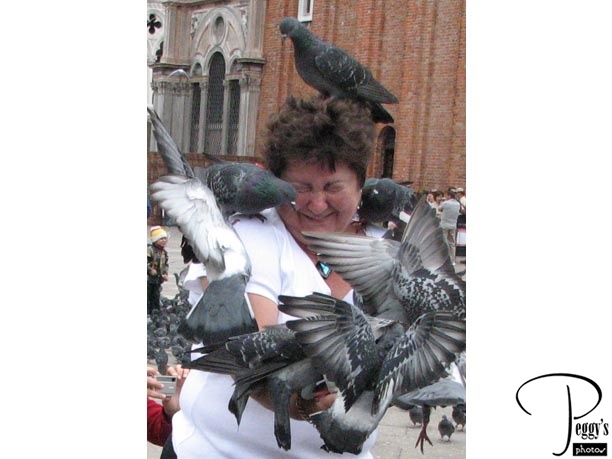
I think she deserves a close–up photo.

Piazza San Marco
Piazza San Marco
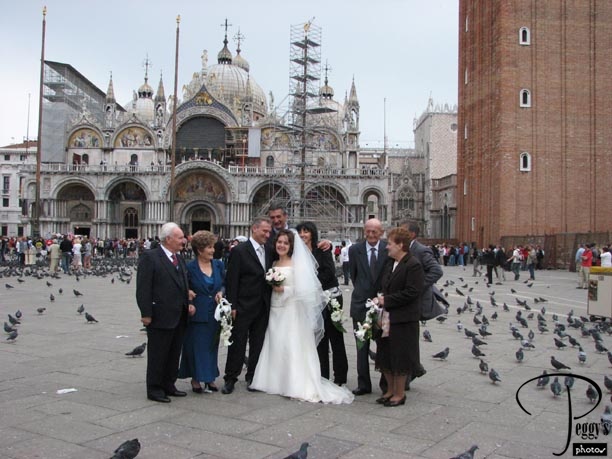
Wedding photo being taken in the Piazza. Too bad there is scaffolding on the Basilica.

Piazza San Marco
Walk to the Rialto Bridge
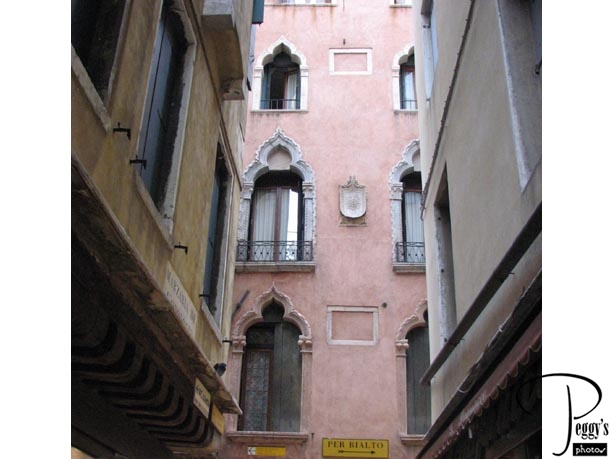
After enjoying the Piazza San Marco, we walked through the narrow streets of Venice to the Rialto Bridge. Surprisingly, I even remembered from 2005 where to start our walk. Actually, it is pretty easy as there are signs saying “Per Rialto” to follow.

Walk to the Rialto Bridge
Walk to the Rialto Bridge
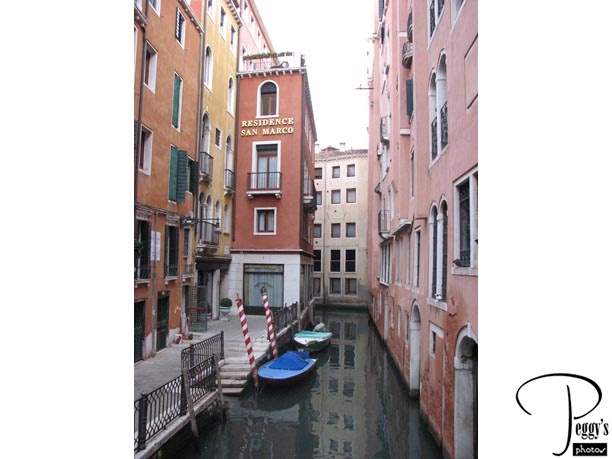
Seen on our walk.

Walk to the Rialto Bridge
Walk to the Rialto Bridge
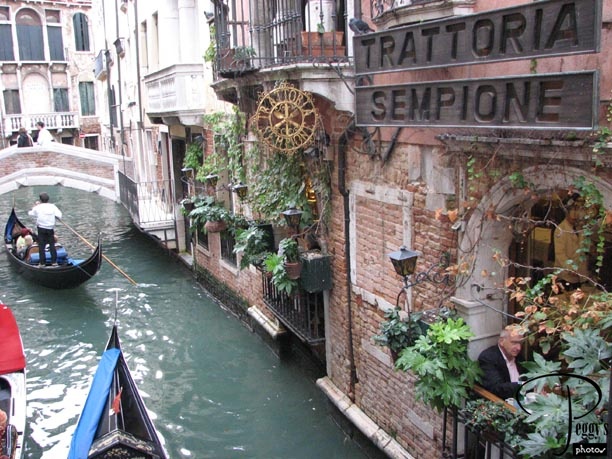
A nice place to eat––look at man on the right of the photo.

Walk to the Rialto Bridge
Walk to the Rialto Bridge
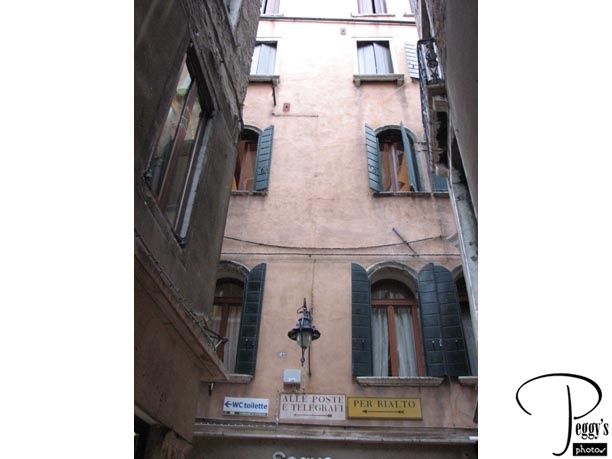
Also seen on our walk.

Walk to the Rialto Bridge
Walk to the Rialto Bridge
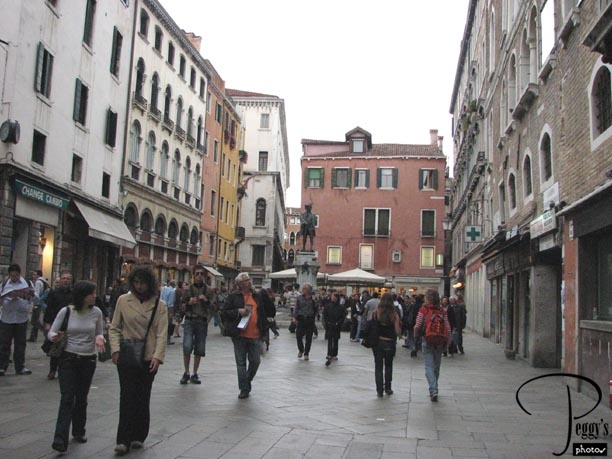
A wider street. We were passing a surprising number of designer stores on our walk.

Walk to the Rialto Bridge
The Rialto Bridge
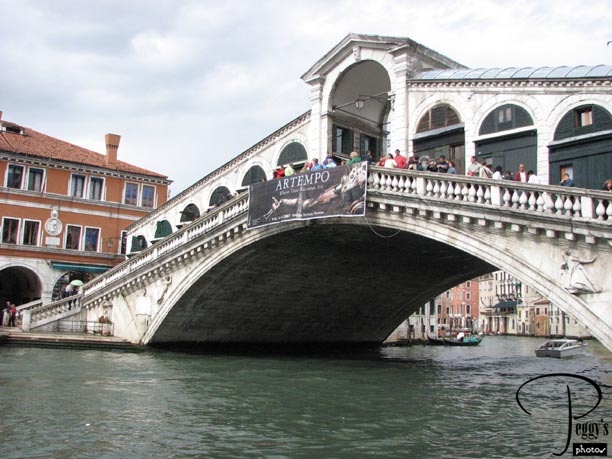
View of the Grand Canal from the top of the Rialto Bridge.

The Rialto Bridge
The Rialto Bridge
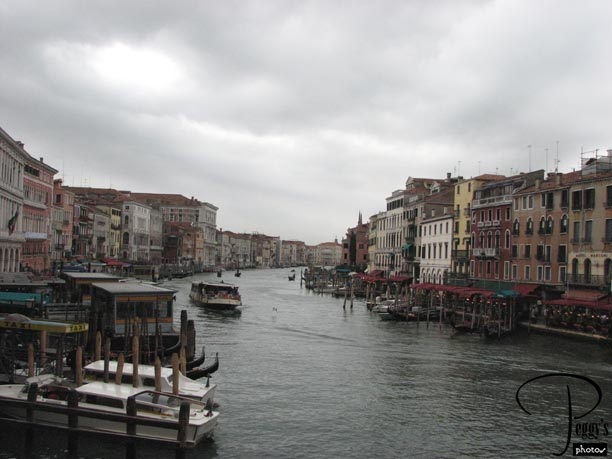
View of the Grand Canal from the top of the Rialto Bridge.

The Rialto Bridge
The Rialto Bridge
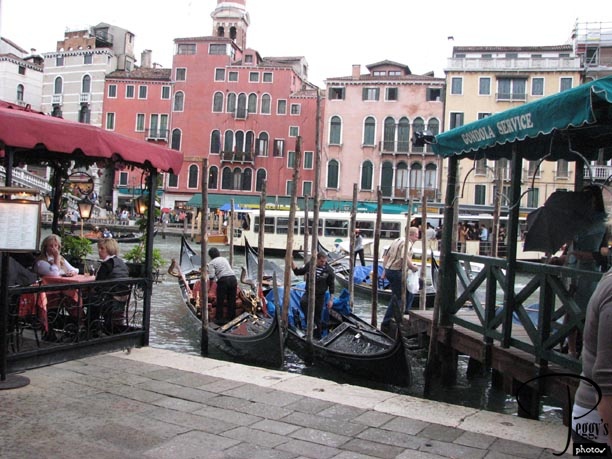
We just made to the other side of the bridge when the sky opened up with a huge cloudburst of heavy rain. I, of course, had left my raincoat and umbrella at the hotel. We tried to wait out the rain under one of the restaurant awnings, but it kept on raining. So, it was time for another coffee inside one of the restaurants.

The Rialto Bridge
The Rialto Bridge
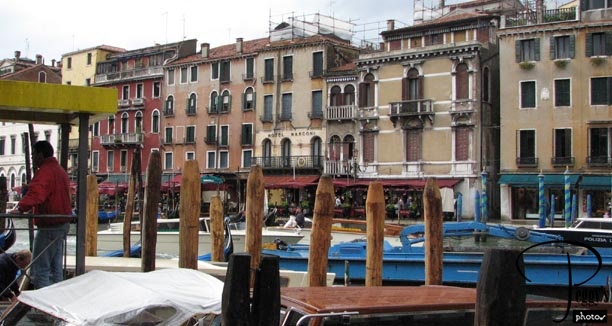
The rain stopped and we had two choices––walk back to Piazza San Marco and risk it raining again or take a vaporetto back to the Piazza where we would take the hotel’s water taxi back to the hotel. We decided on the vaporetto but we still had to recross the Rialto Bridge to get to the right vaporetto station––its steps were already dry. By this time, Keith had figured out how to get us on the right vaporetto. There are LCD signs in front of the stations that tell you which vaporetto is coming in next and where some of its stops will be. We took the 86 as one of its stops would be one of the Zaccaria stops near Piazza San Marco.

The Rialto Bridge
Guidecca
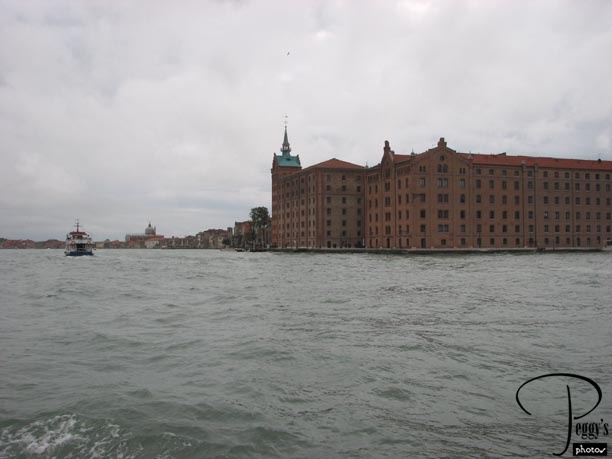
But we were surprised at the route that our vaporetto took: all the way across the Lagoon to the island of Guidecca. Actually, this was quite interesting as unless you are staying at a hotel on this island you probably would not get to see it at all. Keith and I were looking for the new Hilton Molino Stucky that just opened this year. We did pass it but did not recognize it to be a hotel, much less a Hilton. The new Hilton, shown in this photo, is the restored 19th–century Molino Stucky flour mill and granary. It must have beautiful views across the Lagoon of Venice.

Guidecca
Guidecca
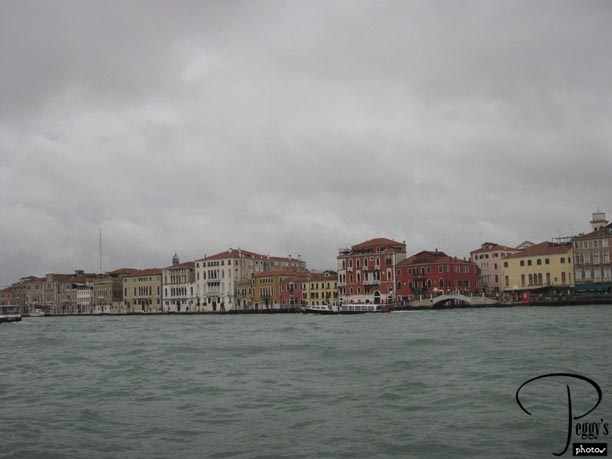
The Guidecca waterfront. Guidecca is mainly a residential island.

Guidecca
Guidecca
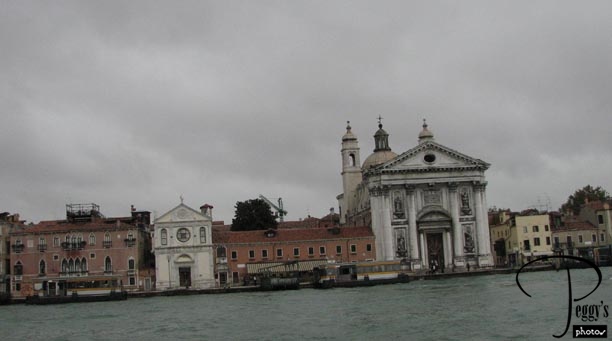
More of Guidecca.

Guidecca
Guidecca

More of the waterfront.

Guidecca
Guidecca
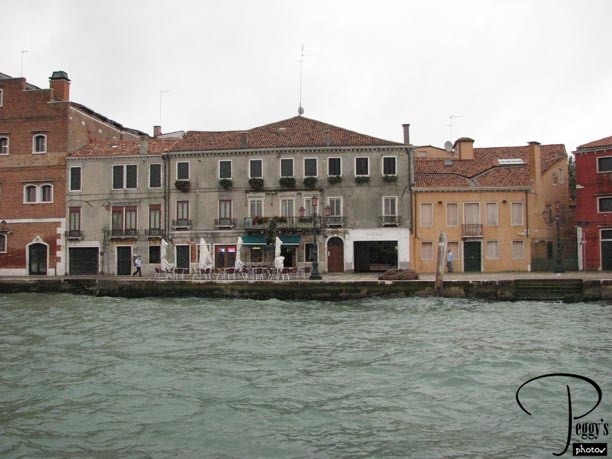
Waterfront dining.

Guidecca
Guidecca
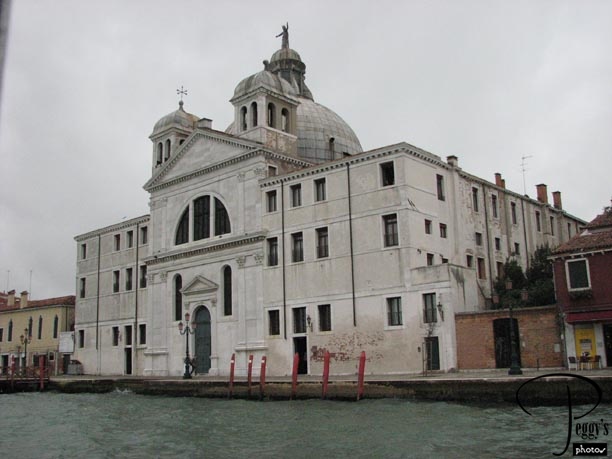
A church on Guidecca.

Guidecca
San Giorgio Maggiore
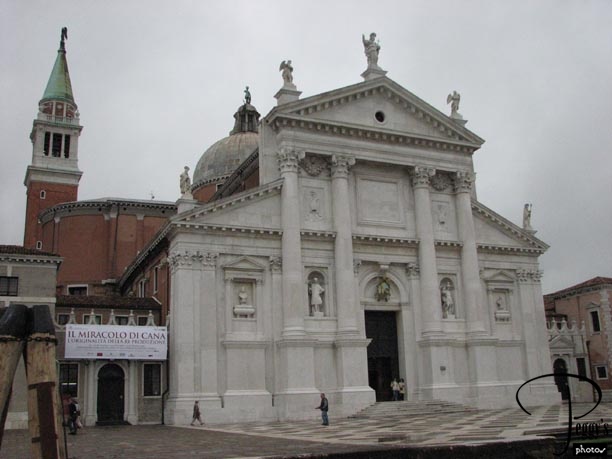
A church on Guidecca.

San Giorgio Maggiore
The Lagoon
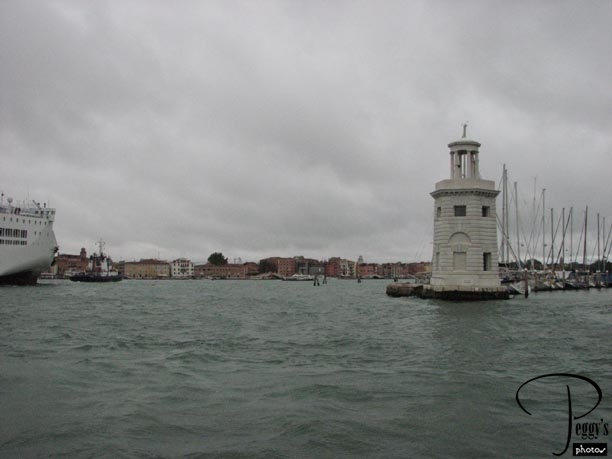
Crossing the Lagoon.

The Lagoon
Venice
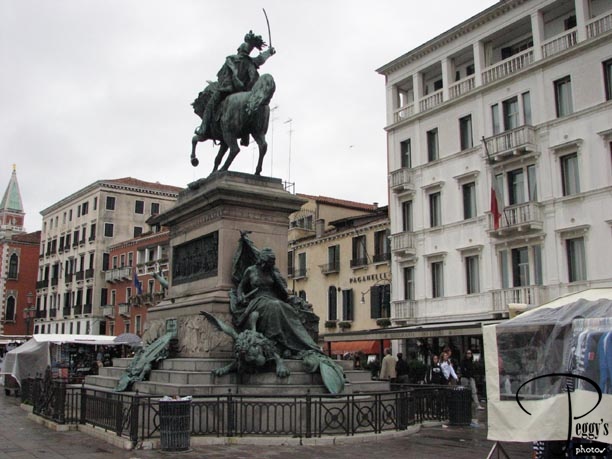
Back on Venice Island. The equestrian statue near Piazza San Marco.

Venice
Venice
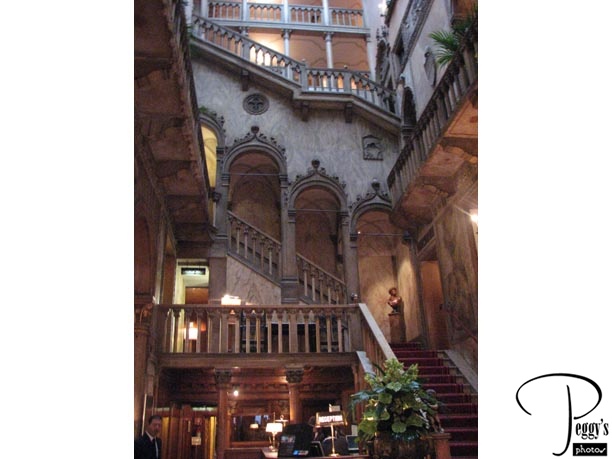
We wanted to go back to our hotel for a good nap but weren’t sure where our hotel’s dock was. We went into the Hotel Danelli to ask them––the Danelli is a Westin hotel. It is quite a beautiful hotel––the lobby.

Venice
On the Lagoon
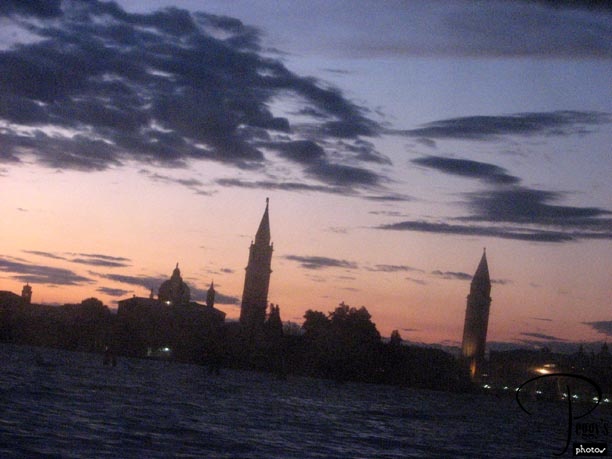
After a good nap, we again took our hotel’s water taxi back to Venice. Night scene coming into Venice.

On the Lagoon
On the Lagoon
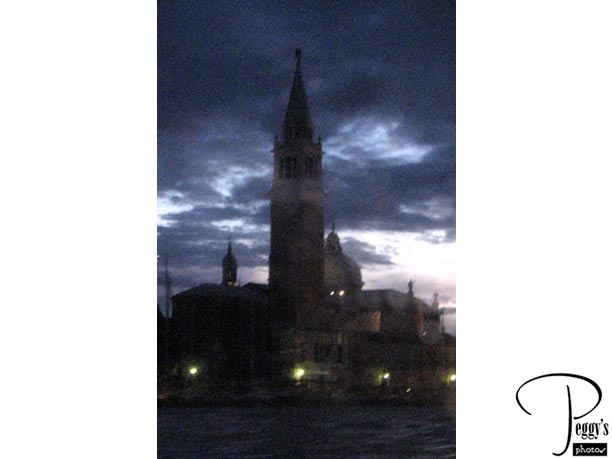
Passing by San Giorgio Maggiore.

On the Lagoon
Venice
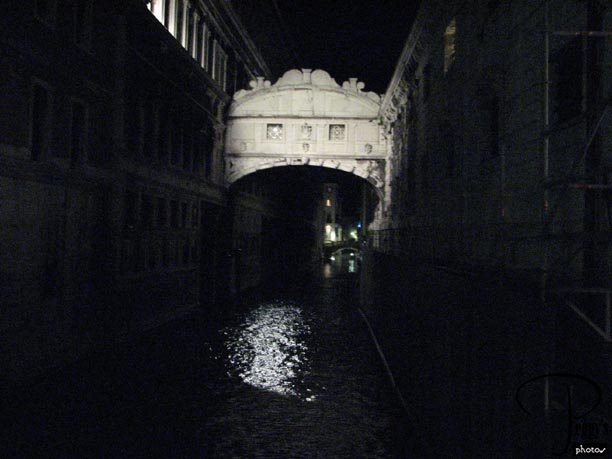
Back on Venice Island. Walking past the lit–up Bridge of Sighs

Venice
Venice
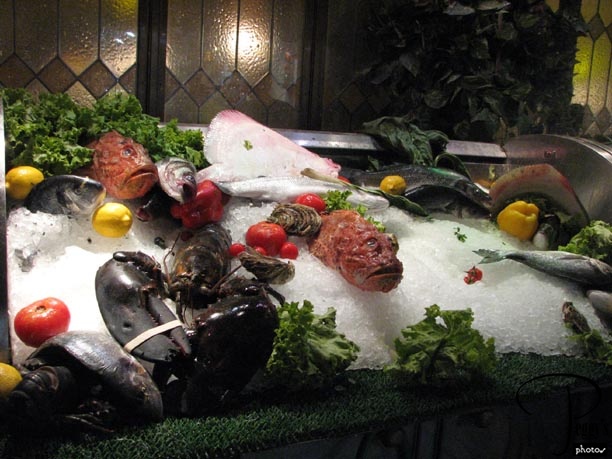
Keith had picked out where we would eat when we were there earlier in the day. Photo: Restaurant’s outside display of tonight’s available seafood. We had a very good meal.

Venice
Venice
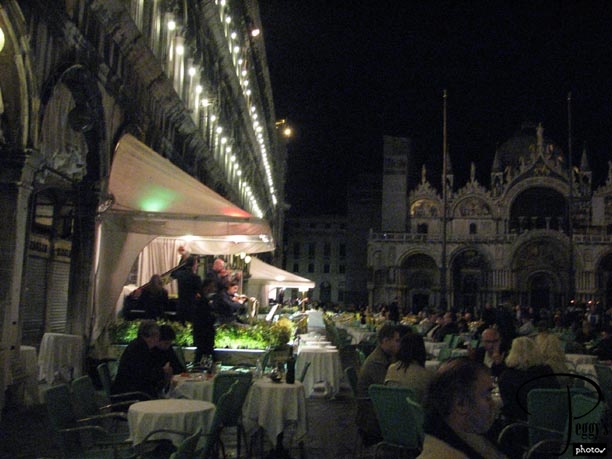
After dinner, we had coffee at the Piazza San Marco. We kept ending up in this Piazza. Only two orchestras were playing and there was little of a crowd, possibly because it had rained again. I took a movie clip of the orchestra in the photo and it is on this site: Go to Movies, Western Europe, Italy, ” Piazza San Marco Orchestra at Night.” We took the hotel’s water taxi back to the hotel––a very good day.
